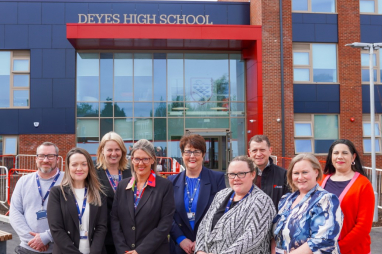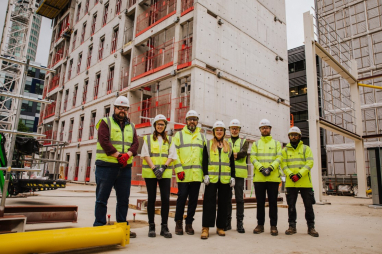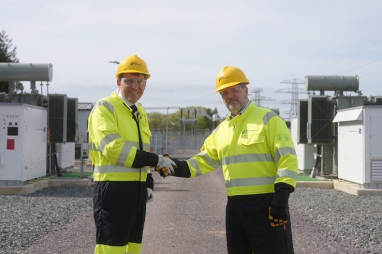- nike flyknit roshe electric green black Paris 308270 - SBD - nike boot with side zipper jeans black pants size , 111 Release Date
- The 25 Best Air Force basketball 1 Colourways of All Time , IetpShops , Nike Swoosh logo embroidered fleece shorts
- bb8587 adidas women sneakers new release
- air jordan 1 royal nike outlet
- images of nike lebron 6 low safari blue , Ja Morant Nike Ja 1 Colorways + Release Dates , IetpShops
- nike air force 1 boot cordura black wheat university gold do6702 001
- Air Jordan 1 Mid Bred 554724 074 2020 Release Date 4
- air jordan spring 2021 retro collection release date info
- on feet air jordan 1 low chicago
- Travis Scott Air Jordan 1 High OG CD4487 100 Release Date Price
- Home
- News and analysis
- Info hubs
- Events
- Video
- Case Studies
- About us
- Magazine
- Advertising
Produced for the industry by the Association for Consultancy and Engineering
Comment
Why we can’t forget biodiversity in the race to net zero

Infrastructure schemes should be creating additional social value with biodiversity and benefits to nature at their heart, say Claire Wansbury and Jonathan Nichols of Atkins.
“We are facing a global crisis. We are totally dependent upon the natural world. It supplies us with every oxygen-laden breath we take and every mouthful of food we eat. But we are currently damaging it so profoundly that many of its natural systems are now on the verge of breakdown.”
From The Economics of Biodiversity: The Dasgupta Review.
The recent independent global review on the economics of biodiversity led by Professor Sir Partha Dasgupta (the Dasgupta Review) set out the world’s challenge in no uncertain terms, showing the extent to which the global economy is embedded in the biosphere and all economic activity is fundamentally built on healthy, flourishing and diverse ecosystems. The economy is embedded within nature and nature is in trouble – so we are all in trouble.
The most compelling element in the Dasgupta Review was the comparison of biodiversity (a key part of the world’s ‘natural capital’) to an investment portfolio. No sensible investor would rely on only a few assets for their profits, they would ensure they have a diverse portfolio to secure a return and mitigate their risks. The same can be said of life on earth. By cultivating only a few species at the expense of the rest we are putting our prosperity at risk. The effect of humans, particularly in the last thousand years, has been to erode this diversity. The more we lose biodiversity, the more we undermine the resilience of our asset portfolio, an action that is already having grave consequences across the globe, including our ability to achieve carbon net zero.
So, biodiversity is important in itself to society and economy. But what does biodiversity have to do with net zero? One example - in the UK there is a major road scheme that looks to create new areas of habitat to compensate for habitat loss elsewhere. Teams have been able to demonstrate that these new habitats will not only improve biodiversity value overall (biodiversity net gain), but also deliver net increases in terms of carbon sequestration, flood protection and air pollutant removal.
By doing something for wildlife, the work is very clearly doing something for the community, enhancing the benefits we receive from nature, known as ‘ecosystem services’. Conversely, if humanity is eroding biodiversity, we’re also eroding the capacity of nature to help us lock away carbon, making it harder to reach net zero and becoming increasingly reliant on pricier technological fixes while undermining a fundamental part of the solution.
This is why there is a vital case to be made for biodiversity in relation to climate change and net zero as biodiverse habitats store and sequester carbon. Sometimes this climate regulation service is thought as being provided by nature ‘for free’, but like any asset, it requires investment to protect, maintain and enhance the returns of the benefits we enjoy.

When we think of how we can invest to make the most of this, we often think of planting trees, but most carbon is actually stored in soils and in the UK, peatlands are actually our biggest carbon stores. We therefore need to understand the capacities of our various natural assets for carbon storage and sequestration and recognise that protecting and restoring existing assets is just as important as planting new woodlands.
What does this mean for climate adaptation? The National Infrastructure Commission’s recent publication on natural capital and environmental net gain highlights that it’s a two-way street between our physical infrastructure and our natural capital, which we can think of as stocks of natural infrastructure assets. We can have an impact on our natural capital through infrastructure development, but also vice versa. Physical infrastructure is affected by the environment as much as nature is affected by our creation of infrastructure. We need to ensure that the feedback relationships between our natural and built infrastructure are healthy ones, and that both can work in harmony rather than against each other.
With this mindset, we are enabling our clients to use more nature-based solutions either in combination with or instead of hard engineering solutions – for example, restoring floodplains rather than building large concrete flood walls, and exploring opportunities for natural flood management with clients including the Environment Agency, water companies, landowners and NGOs.
Such schemes, which work with natural processes, hold water back using natural topography, soft dams and woodland areas. Sustainable urban drainage systems are another example, reducing the strain our sewage treatment works are under and providing a degree of filtration before water enters our drainage systems. In these examples, the carbon assessments demonstrate how these schemes can contribute to both net zero and biodiversity net gain and deliver a range of ecosystem services benefits.
The more infrastructure needs are aligned with natural processes, the better for the environment, the economy and the wellbeing of both humans and wildlife. To achieve this, we should aim for ‘environmental net gain’, with biodiversity net gain at its heart, in our efforts to reach net zero. With this holistic approach, we can mitigate impacts on wildlife and habitats at the same time as we address the carbon challenge, designing schemes that benefit nature and move us towards net zero.
Whether we are creating compensatory habitats or using nature-based solutions to engineering challenges, we have the opportunity to not only sequester more carbon but deliver a range of multiple benefits for the economy, our health, wellbeing and for wildlife, achieving multiple objectives at once. This is exactly the kind of added social value our infrastructure schemes should be aiming for. And why we got into this business in the first place.
Claire Wansbury is an associate director and Jonathan Nichols a senior environmental consultant, both at Atkins.






